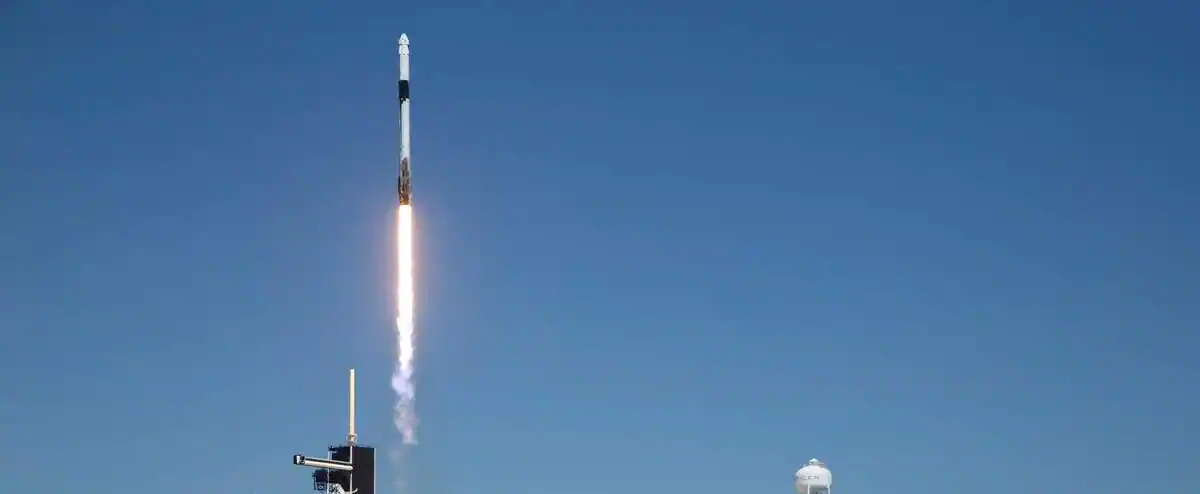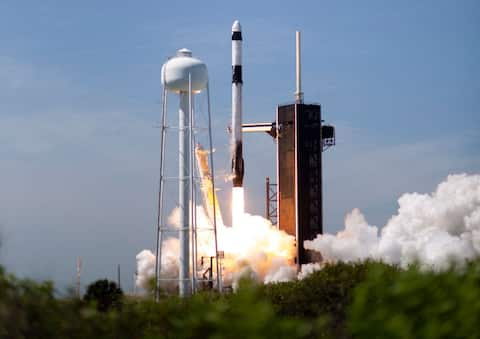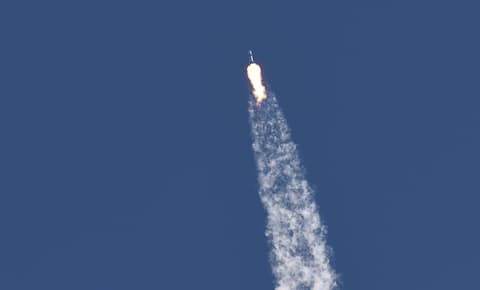Three businessmen and a former astronaut blasted off on a SpaceX rocket Friday for the first all-private mission to the International Space Station, where they will stay for just over a week.
• Read also: Astronomers on the trail of farthest galaxies
• Read also: NASA’s latest massive rocket test suspended
• Read also: Lunar dust at auction
Liftoff took place at 11:17 a.m. local time (3:17 p.m. GMT) from the Kennedy Space Center under blue skies over Cape Canaveral, Florida.
Beginners have already visited the space station (ISS), especially in the 2000s. Last year, Russia sent a camera crew there, and then a Japanese billionaire. But these missiles flew on board Soyuz rockets accompanied by astronauts.
This time around, it was Axiom Space that organized the flight, buying transportation from SpaceX and paying NASA for use of its station.
“We are expanding the land frontiers of commerce into space,” said Bill Nelson, head of the US Space Agency, who attended the liftoff.
“To say we’re happy is an understatement,” Axiom Space CEO Michael Suffredini said at a press conference, noting that it was the culmination of six years of working with NASA and SpaceX.
The mission leader, named Ax-1, is Spanish-American Michael López Alegria, a former NASA astronaut who now works for Axiom. He’s been to the International Space Station before.
The other three crew members paid tens of millions of dollars each for the experience. He played the role of American pilot Larry Connor, at the head of a real estate company.
Also on board: Canadian Mark Pathy, president of an investment firm, and former pilot Eitan Stipe, co-founder of an investment fund.
The latter is the second Israeli astronaut in history, after Ilan Ramon, who died in 2003 in the explosion of the American space shuttle Columbia, upon his return from the International Space Station.
“He was a good friend,” Stipe said at a news conference last week. “I will continue the experiment that he started 19 years ago, which focused on storm monitoring,” he said.
The president of Axiom Space said that no woman had come forward with this first assignment.
Scientific expertise
The four men have a packed program, with about 25 trials, on aging, heart health, or even stem cells.
“The experiments that I run there, which come from Canadian universities and research institutes, might not have had the opportunity to test in space” without this mission, said Mark Pathy.
For this reason, among other things, members of Ax-1 refuse to be called space tourists.
“I think it’s important to differentiate between a space tourist and private astronauts,” said Larry Connor. The former “spends 10 to 15 hours training, 5 to 10 minutes in space. (…]We spent between 750 and 1000 hours training. »
He and Michael Lopez Allegria trained on the SpaceX capsule system, Dragon.
And all of them learned how to act in an emergency situation at the station. But also for carrying out tasks of daily living, such as washing in weightlessness.
However, their training is less advanced than that of professional astronauts, who must be able to perform spacewalks or even repair equipment.
Ax-1 members “will use restrooms, but if they break, our crew will fix them,” they went so far as to specify on Thursday a NASA official, Dana Weigel.
Future Special Station
The Dragon capsule is scheduled to dock with the International Space Station on Saturday at about 07:45 (11:45 GMT).
Upon arrival, the crew will receive a guided tour of the station.
This is only the sixth time that SpaceX has flown humans (the fifth to the International Space Station). The first flight took place less than two years ago.
Axiom Space has reached an agreement for a total of four missions with SpaceX, and NASA has already formally approved the second axis principle, Axis 2.
For Axiom Space, this is the first step toward an ambitious goal: to build its own space station.
The first module of this particular station should be launched in September 2024. The structure will first be attached to the International Space Station, before becoming independent upon the latter’s retirement, a priori around 2030.
NASA strongly encourages this move to privatize low orbit, which wants to generate income through these special missions and, in the long run, no longer have to manage the operation of a station, but rather to lease the services of the structures. Especially, in order to focus on distant exploration.

“Proud thinker. Tv fanatic. Communicator. Evil student. Food junkie. Passionate coffee geek. Award-winning alcohol advocate.”



